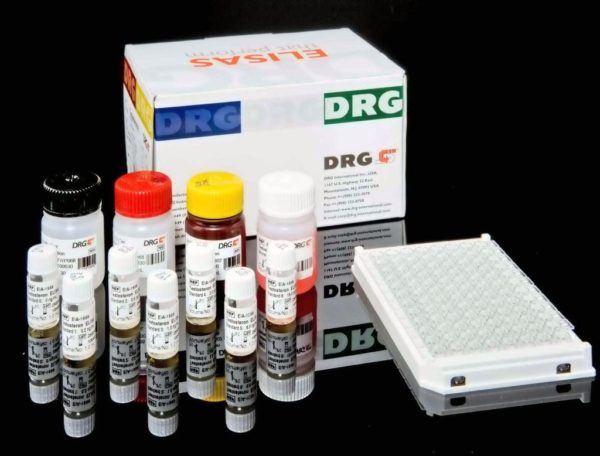Description
An enzyme immunoassay for the qualitative and semiquantitative determination of IgG-class antibodies to Parvovirus B19 in serum.
Parvoviruses are cubic single-stranded DNA viruses of about 18-32 nm lacking an envelope. Parvovirus B19 infects only humans, and since there are no crossreactivities between animal parvoviruses and B19, transmission between pets and humans is not possible. Parvovirus B19 is the causative agent of Erythema infectiosum, the so-called Òfifth diseaseÓ, a mild rash illness that occurs most commonly in children. Infected persons are contagious during the early part of the illness before the rash appears so in adults the rate of epidemia amounts to about 60%. About 20% of adults and children who are infected with parvovirus B19 do not develop any symptoms. Persons infected with the virus, however, do develop lasting immunity that protects them against infection in the future. Parvovirus B19 infection may cause a serious illness in persons with sickle-cell disease or similar types of chronic anemia as well as in persons who have problems with their immune system (people with leukemia or cancer, who are born with immune deficiencies, who have received an organ transplant, or who have HIV infection). Occasionally (less than 5% of all pregnant women infected with parvovirus B19) serious complications may develop during pregnancy: risk of Morbus haemolyticus fetalis.
The DRG Parvovirus B19 IgG (Recombinant) ELISA Kit is a solid phase enzyme-linked immunosorbent assay (ELISA) Microtiter wells as a solid phase are coated with recombinant Parvovirus B19 antigen (VP1 proteins). Diluted patient specimens and ready-for-use controls are pipetted into these wells. During incubation Parvovirus B19-specific antibodies of positive specimens and controls are bound to the immobilized antigens. After a washing step to remove unbound sample and control material horseradish peroxidase conjugated anti-human IgG antibodies are dispensed into the wells. During a second incubation this anti_IgG conjugate binds specifically to IgG antibodies resulting in the formation of enzyme-linked immune complexes. After a second washing step to remove unbound conjugate the immune complexes formed (in case of positive results) are detected by incubation with TMB substrate and development of a blue color. The blue color turns into yellow by stopping the enzymatic indicator reaction with sulfuric acid. The intensity of this color is directly proportional to the amount of Parvovirus B19-specific IgG antibody in the patient specimen. Absorbance at 450 nm is read using an ELISA microtiter plate reader.




